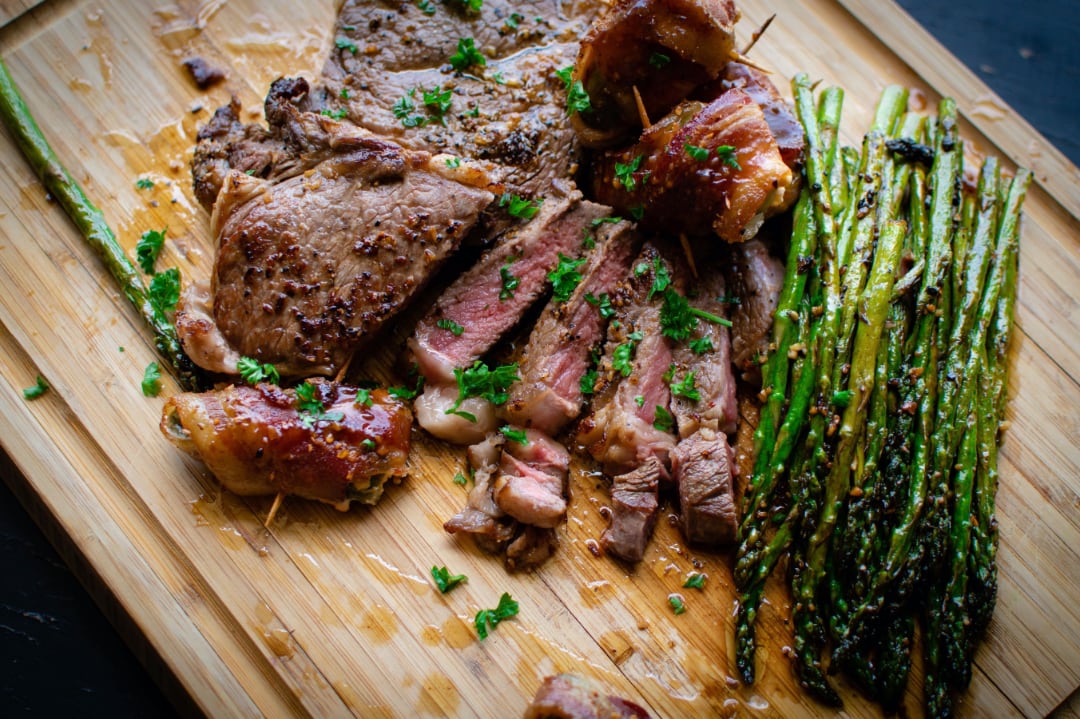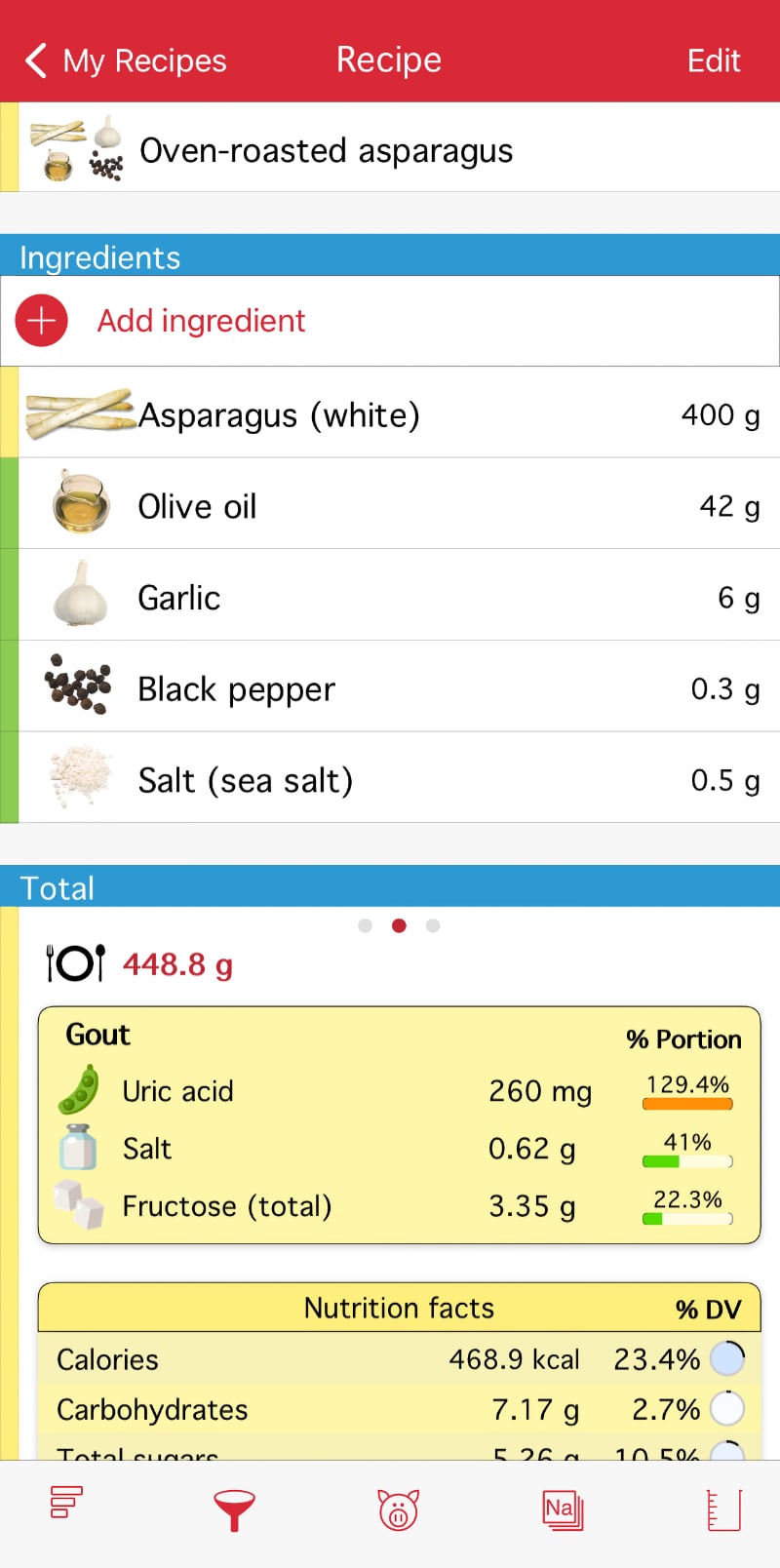Asparagus and gout – what do we know?
02/25/2022 OxiPur
Visit a supermarket around mid-April and you are likely to find asparagus on the shelves. Asparagus officinalis, to give it its scientific name, is an extremely versatile vegetable, but it is also rich in purine. Here we consider whether people that suffer from gout should avoid it.

What many may not know is that green and white asparagus come from the same plant. If the asparagus is harvested whilst the shoot is still beneath the ground, its color remains white. As soon as the shoot comes into contact with sunlight, it turns green. Growing white asparagus is very time-consuming, which is why the green variant is more commonly found.
Both types are packed with vitamins and minerals such as folic acid, B vitamins, vitamin C, and potassium, all important parts of a healthy diet. The green type tends to contain slightly more vitamins and, most importantly, secondary plant substances. The reason for this is that because the shoot grows above the ground and is not protected by the soil, it must protect itself from the various environmental challenges it faces.
For a vegetable, asparagus also has a low glycemic index and a relatively high protein content. Nevertheless, its purine content is actually very high too, compared with other vegetables.
Asparagus is a multi-purpose vegetable. One of the most common ways it is served is oven-roasted asparagus, which typically consists of the following:
Let us take a look at the purine content of the meal above using the purine calculator in our OxiPur app. This gives us not just an overview of the amount of purine – expressed in a uric acid equivalent – but also an idea of what other substances are contained in an asparagus meal. Using the above, the result looks like this:
 ▲ Figure 1: Purine content of an asparagus dish [source: OxiPur].
▲ Figure 1: Purine content of an asparagus dish [source: OxiPur].
We can calculate that with a serving of oven-roasted green asparagus the body consumes over 60% of the maximum recommended daily amount – 500 mg – of uric acid. Moreover, that amount also well exceeds the threshold recommended for a single portion. Taking only these numbers, therefore, it becomes very clear why eating asparagus is often discouraged for sufferers of gout.
Meanwhile, various studies have shown that the effects of purines in asparagus and other purine-rich vegetables are not comparable to those of animal purines. Asparagus is high in fiber and other ingredients that help the body excrete excess uric acid. So the consumption of green and white asparagus only slightly increases the uric acid level in the blood, and does not increase the risk of gout. As recently as ten years ago it was recommended to avoid asparagus if you suffered from gout. Today, however, we know that it is not just the total purine content of a meal that matters but also the type of purine, as well as many other factors, that can accelerate or inhibit uric acid excretion.
The answer is no. If you suffer from gout, you do not have to stop eating asparagus. You can treat yourself to it from time to time – perhaps not as shown in the picture above but as part of a vegetarian dish. If you eat asparagus as an accompaniment to meat or fish, the picture is markedly different. For example, a significant amount of uric acid will be produced by consuming asparagus with a large steak, although the latter rather than the former will be the main culprit.
Back to blog
Photo by Ashley Byrd on Unsplash

Why is asparagus so practical?
What many may not know is that green and white asparagus come from the same plant. If the asparagus is harvested whilst the shoot is still beneath the ground, its color remains white. As soon as the shoot comes into contact with sunlight, it turns green. Growing white asparagus is very time-consuming, which is why the green variant is more commonly found.
Both types are packed with vitamins and minerals such as folic acid, B vitamins, vitamin C, and potassium, all important parts of a healthy diet. The green type tends to contain slightly more vitamins and, most importantly, secondary plant substances. The reason for this is that because the shoot grows above the ground and is not protected by the soil, it must protect itself from the various environmental challenges it faces.
For a vegetable, asparagus also has a low glycemic index and a relatively high protein content. Nevertheless, its purine content is actually very high too, compared with other vegetables.
How much purine does an asparagus meal contain?
Asparagus is a multi-purpose vegetable. One of the most common ways it is served is oven-roasted asparagus, which typically consists of the following:
- 500 g asparagus
- 3 tbsp olive oil
- 1 garlic clove (optional)
- black pepper
- salt
Let us take a look at the purine content of the meal above using the purine calculator in our OxiPur app. This gives us not just an overview of the amount of purine – expressed in a uric acid equivalent – but also an idea of what other substances are contained in an asparagus meal. Using the above, the result looks like this:

We can calculate that with a serving of oven-roasted green asparagus the body consumes over 60% of the maximum recommended daily amount – 500 mg – of uric acid. Moreover, that amount also well exceeds the threshold recommended for a single portion. Taking only these numbers, therefore, it becomes very clear why eating asparagus is often discouraged for sufferers of gout.
Animal and vegetable purines are not comparable
Meanwhile, various studies have shown that the effects of purines in asparagus and other purine-rich vegetables are not comparable to those of animal purines. Asparagus is high in fiber and other ingredients that help the body excrete excess uric acid. So the consumption of green and white asparagus only slightly increases the uric acid level in the blood, and does not increase the risk of gout. As recently as ten years ago it was recommended to avoid asparagus if you suffered from gout. Today, however, we know that it is not just the total purine content of a meal that matters but also the type of purine, as well as many other factors, that can accelerate or inhibit uric acid excretion.
Should asparagus be on the blacklist for gout sufferers?
The answer is no. If you suffer from gout, you do not have to stop eating asparagus. You can treat yourself to it from time to time – perhaps not as shown in the picture above but as part of a vegetarian dish. If you eat asparagus as an accompaniment to meat or fish, the picture is markedly different. For example, a significant amount of uric acid will be produced by consuming asparagus with a large steak, although the latter rather than the former will be the main culprit.
Why do we care so much about this topic?
 We have been developing our "OxiPur" app about gout and oxalates for many years and are happy to share our knowledge with you. Check it out:
We have been developing our "OxiPur" app about gout and oxalates for many years and are happy to share our knowledge with you. Check it out:
Share article
Share article
Back to blog
Photo by Ashley Byrd on Unsplash
![[Blog]](../../rw_common/images/baliza_logo_retina.png)
